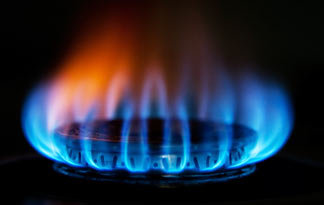Africa has already made an indelible mark in the oil industry. It is home to four of the world’s top 20 crude oil producers — Nigeria, Angola, Algeria, and Libya — and these same four countries also have some of the largest oil reserves in the world.
So far, it hasn’t made quite as much of a splash in the gas industry. The only African countries on the list of the world’s top 20 gas producers are Algeria and Nigeria, and one of the states that has the largest gas reserves is Mozambique, which is still several years away from bringing its major fields on line.
But the gap between African oil and gas doesn’t have to be permanent. The continent’s gas industry is on the verge of real transformation, as the African Energy Chamber (AEC) notes in our 2021 Africa Energy Outlook, released earlier this month. I’d like to describe what forms that shift might take — and explain how the changes would benefit Africans.
New Sources of Production
Some of the change I expect is going to happen in the upstream sector — that is, in the realm of exploration and production.
First, the continent’s current leading producers are likely to produce more. North African states such as Egypt and Algeria will account for part of this increase, as they are looking to ramp up development at existing natural gas fields. But another part of it will stem from programs designed to reduce the flaring of associated gas found in oil fields. Both Nigeria and Angola, for example, have plans to expand the use of associated gas. The former aims to deliver its production to the domestic market, while the latter is looking to split its production between the local market and the export-oriented Angola LNG project.
The upshot of these trends is that the list of Africa’s top gas producers will probably remain static until the middle of the decade. As the AEC’s outlook explains: “The (continent’s) top five crude oil producers — Nigeria and Angola from the west, and Algeria, Egypt, and Libya from North Africa — complete the top five natural gas producers for 2020 and 2021. These five countries contribute about 90% of the overall natural gas output from the continent for both (2020 and 2021), and the expected forecast suggests the share of these countries will remain the same going into the mid-2020s.”
At that point, though, new producers will start to play a more prominent role. Mozambique is due to launch its first greenfield project at Area 1 in 2024, and its offshore zone may become a major source of natural gas by 2025-2026. The Mauritania-Senegal offshore zone may follow a similar timeline, as the Greater Tortue/Ahmeyim blocks may begin yielding natural gas in 2023, followed later by the Yakaar-Teranga and BirAllah projects. What’s more, all four of the projects mentioned in this paragraph will support gas liquefaction plants capable of producing and exporting LNG.
By the end of the decade, then, there will be more than five countries accounting for the bulk of Africa’s total gas production. Nigeria, Angola, Algeria, Egypt, and Libya will be joined by at least three others —Mozambique, Mauritania, and Senegal.
Domestic Consumption vs. Exports
Meanwhile, consumption patterns are going to shift along with production patterns. Once again, this shift is likely to begin once the large new fields in the Mozambique and Mauritania/Senegal provinces come online.
The change may not be obvious on a macro level, because it won’t be evident in the split between exports and domestic consumption. That is, Africa will continue to use about 70% of the gas it extracts and will export continue to the remaining 30%. As the AEC’s outlook explains, though, the geography of African gas exports will not remain static.
“The pattern has been relatively stable since 2012 with about 70% serving local markets, 20% exported to Europe and 10% exported to Asia,” the report states. “The mid-2020s LNG startups are also expected to distort this picture by increasing the market share for East Asia LNG exports. This development is, however, not (a consequence) of local markets’ (rising demand), but rather the shrinking ability of North African countries to maintain their export capacity to Europe on the back of strong domestic demand growth. By 2030, the expectation is effectively for East Asia and Europe to be inverted, while domestic market share remains constant.”
In short, Africa is on track to produce more gas by the end of the decade but will keep the same share of the total for its own use. At the same time, Asia will replace Europe as the most important market for African gas exports.
Gas Means Jobs
These trends are interesting, but you may want to ask: What do they mean for ordinary Africans, for people who are less concerned with production data and trade balances than with questions about how to support their families?
They mean a great deal.
As I’ve mentioned, the 2021 Africa Energy Outlook report projects that African gas production is going to rise, especially after new fields come on line and ramp up development in the middle of the decade. It also anticipates that African gas consumption will rise, even if domestic consumption continues to absorb a full 70% of total production.
As production goes up, upstream operators will create jobs. They will need people to help them build, operate, maintain, and repair production, transportation, and processing facilities. They will also need people to administer their local operations. Additionally, they will need to meet legal requirements or contractual commitments for local content, so they will need to hire African contractors. Those African contractors, in turn, will need employees of all kinds, and so will hire African workers.
And as consumption goes up, even more jobs will be created. Distributors will need new pipelines to deliver the gas to end-users, so they will need people who can help them build, operate, maintain, repair, and administer those pipelines, along with associated infrastructure facilities such as storage depots. And even in the absence of pipelines, they will need to acquire tankers and containers so that they can bring gas to customers by road, rail, or river. Accordingly, they will need people to procure, operate, maintain, repair, and administer these operations.
Meanwhile, there’s more. The hiring of more African workers is sure to have knock-on effects. If, for example, employees of upstream operators need a way to get to a remote worksite, local transportation companies may be able to serve them. If so, those transportation companies may have to hire more people to drive their vehicles. Likewise, if African construction firms need to procure extra building materials to uphold their contracts with upstream operators, local suppliers may be able to meet their needs. And if so, those local suppliers may have to hire more people to handle their inventory.
In other words, as Africa’s gas industry grows, it has the potential to create thousands and thousands of jobs! Of course, some of them, such as construction jobs, will be temporary. Some of them will be more permanent, though, especially if the governments of gas-producing states work with upstream operators to develop local hiring and training standards that expand the capacity of the local workforce.
All the Way Down the Value Chain
But the knock-on effect doesn’t have to stop there.
In my most recent book, Billions at Play: The Future of African Energy and Doing Deals, I urged African oil and gas producers to look as far down the value chain as they could. I advised them to pursue projects that treated hydrocarbons not just as exportable raw materials but as inputs for value-added operations such as fertilizer or petrochemical manufacturing. I also suggested that they look for ways to focus on gas-to-power projects with the intent of improving domestic electricity supplies — and not just because new power grids would benefit African businesses.
It is true, of course, that some African businesses will be able to create more jobs if they do not have to worry about blackouts. Likewise, it is true that gas-to-power projects will create jobs of their own in areas such as construction, operations, maintenance, and administration. But it is also true that African households need and deserve access to reliable energy supplies, regardless of employment levels — and that gas-to-power plans can help them!
I’m hardly the only person to reach this conclusion. When I wrote Billions at Play, several African countries had already rolled out ambitious gas-to-power schemes. Nigeria, for example, was in the process of implementing a program that promoted associated gas as fuel for new power plants. Since then, others have followed suit. For instance, as the AEC’s energy outlook notes, Senegal has unveiled plans for using its future gas production to generate electricity for the domestic market. Mozambique already has a couple of gas-to-power projects in the works, too.
But it shouldn’t stop there. I’d like to see more gas producers do this as they ramp up gas production in the second half of the decade. If they do, they will have accomplished something beyond merely increasing output levels. They will have taken concrete action to strengthen their economies and benefit their own citizens. And in so doing, they will have made their mark on the world!
By NJ Ayuk, Executive Chairman, African Energy Chamber
 Public Agenda NewsPaper Ghana's only Advocacy & Development Newspaper
Public Agenda NewsPaper Ghana's only Advocacy & Development Newspaper






